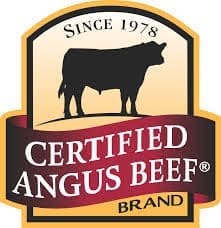In this article, US Cattle Buyers Weekly publisher Steve Kay discusses the changes happening in the US industry in price signals rewarding producers for quality performance….
CATTLE producers in the US for years laboured to get paid more for producing better-quality cattle.
That’s partly because fed cattle were sold live, on the average. This has changed dramatically in the past 20 years. US packers now pay millions of dollars a year for high-quality cattle sold on grids. Such premiums continue to increase because the demand for high quality beef also continues to grow.
 The best example of this trend at the packer and consumer level comes from the Certified Angus Beef program. Premiums for CAB-certified cattle were barely measurable for the first 19 years, although first noted in the 1980s, it says. But the second half of the brand’s 38-year run shows increasing momentum. In fact, rewards for hitting the CAB brand target have never been greater, even after 11 consecutive years of growing supply, it says.
The best example of this trend at the packer and consumer level comes from the Certified Angus Beef program. Premiums for CAB-certified cattle were barely measurable for the first 19 years, although first noted in the 1980s, it says. But the second half of the brand’s 38-year run shows increasing momentum. In fact, rewards for hitting the CAB brand target have never been greater, even after 11 consecutive years of growing supply, it says.
A survey of CAB-licensed packers including Cargill, JBS USA, National Beef and Tyson Foods showed they paid a record US$51.8 million in CAB grid premiums in 2015 and more than US$550 million over 20 years. These numbers do not count smaller premiums paid for cattle grading USDA Choice, or the Prime premiums for the hundreds of thousands of cattle that supply the increasing demand for CAB Prime. The 3.6 million cattle accepted for the brand each year now account for 16pc of all North American fed beef, it says.
USDA reported the highest packer premium ever last November at US$10 per cwt (about A30c/kg, carcase weight), and the highest average CAB premium during February. It is all driven by product demand, as the premiums match CAB’s advantage over the Choice cutout value, says CAB president John Stika.
For a company (CAB) with the mission of adding value to Angus cattle through its branded beef program, it’s satisfying to see the market working to reward producers, even as they supply CAB with more product to keep setting sales records, he says. More than half of all grid premiums ever received for CAB acceptance have been paid in the last seven years. More than 41pc of cumulative CAB premiums have come in the past five years.
Cattle quality is clearly better
Observers say North American cattle are clearly getting better, thanks to a combination of value-based marketing opportunities and enabling genetics. Better cattle are easier to market, says Bruce Cobb, general manager of Consolidated Beef Producers (CBP), Canyon, Texas. “When we do something good, it comes from negotiating the base price for the formulas and grids, and CAB’s standing premiums or discounts are on top of that. That’s 99% of the time with the big four packers, and all have CAB components in their grids.” CBP markets one million cattle per year for feedyard members from Iowa to Texas.
Cattle in Texas now routinely grade at least 62pc USDA Choice and less than 34pc Select. The percentages were the reverse 20 years ago.
Angus genetics have fueled an evolution, especially obvious in Texas, and quality grades move up another step each year, says Cobb. Grading data bear this out. Cattle in Texas now routinely grade at least 62pc USDA Choice and less than 34pc Select. The percentages were the reverse 20 years ago.
Fear of discounts kept producers from using grid and formula marketing for years, says economist Scott Fausti, South Dakota State University. In these last few years with strong demand for beef, packers made more allowances for Yield Grade 4s. As more producers used grids and formula contracts, they learned to take more precautions to avoid discounts. By controlling genetics, health, management and market timing, producers have been able to reap more rewards than discounts, he says. However, he also notes a need for more transparency in pricing. Documenting practices and developing relationships with cattle feeders should lead to more positive information and higher bids for improving cattle, he says.
The premiums begin with the steak on the plate and trickle back through the system all the way to the ranch and to him as a purebred Angus producer, says Jerry Connealy, Whitman, Neb. CAB truly is a pull-through demand entity in the market. The commercial guy may not always think about why he’s getting $5 or $10 more per cwt for his calves but that’s what is pulling it to him. It’s flowing back from the packing plant and feedyard, he says.
Texas Angus seedstock producer James Henderson says the best is yet to come for commercial producers. “We’ve just scratched the surface as far as helping them earn premiums. Angus genetics bring more at every level from weaning on as you walk on through the market. As we add more information with genomics in our database, we can structure programs that bring them more rewards from the market,” he says.
Source: US Cattle Buyers Weekly.
